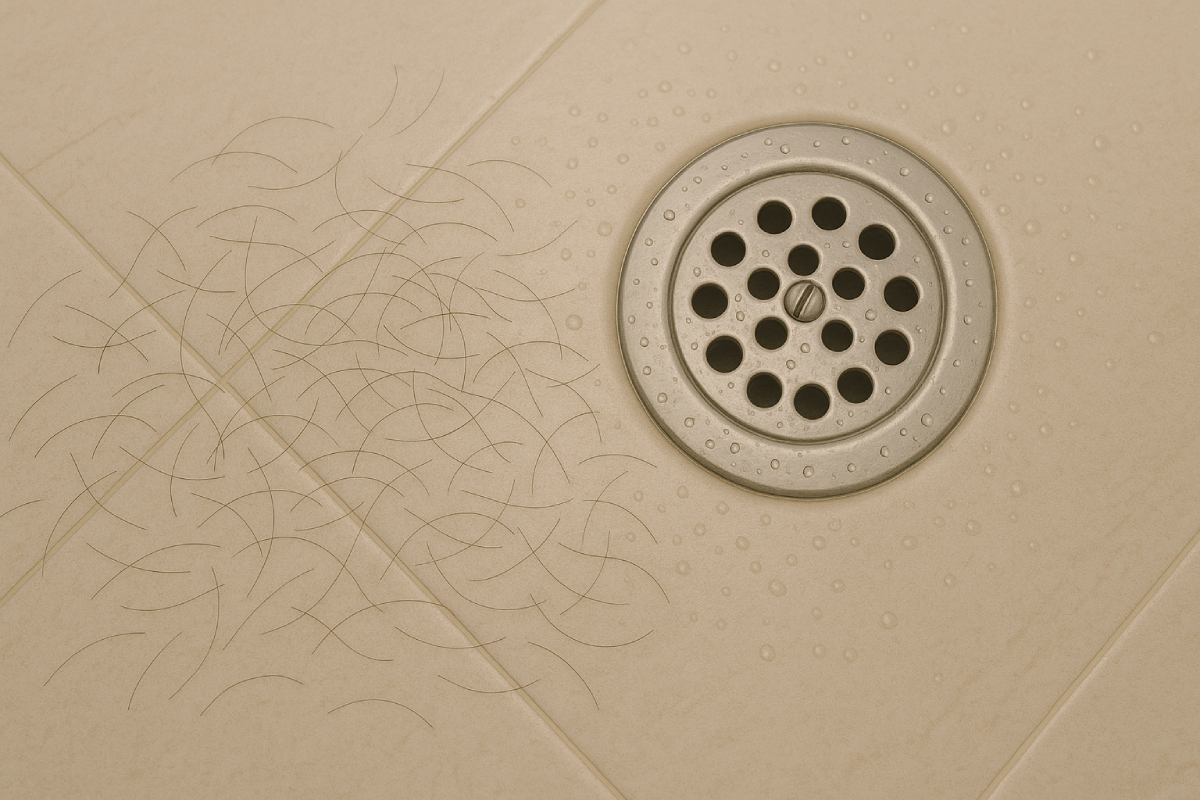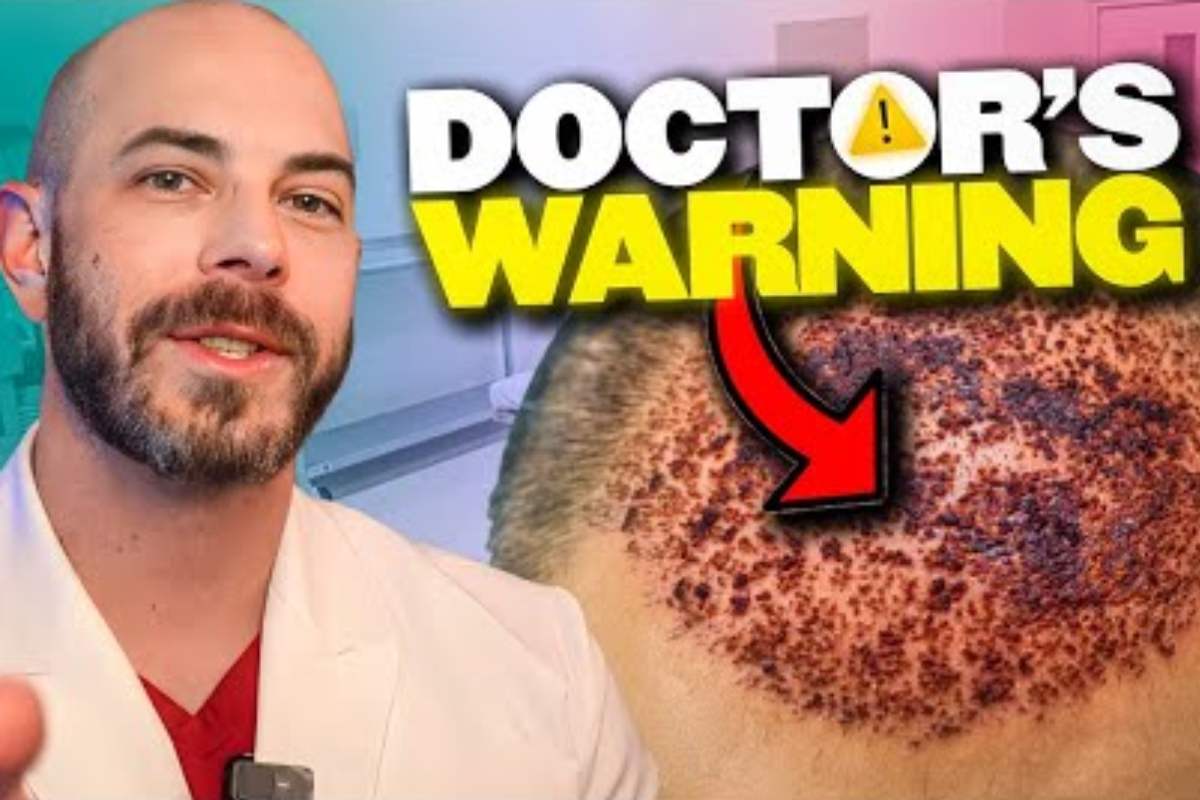Hair transplants are a popular solution for hair loss, be it a receding hairline or a thinning crown. But if you have a scalp condition like seborrheic dermatitis or psoriasis, there are some things you should know before undergoing the procedure.
Scalp conditions can make the skin on your head red, itchy, or flaky. These symptoms can affect how your scalp heals and how well new hair grows. That’s why it’s important to understand how these conditions work before deciding on a hair transplant.
Many people with scalp issues still want to fix thinning hair or bald spots. The good news is that it may be possible with the right care and the right timing.
Knowing how scalp problems like seborrheic dermatitis and psoriasis affect your skin can help you make a safe and smart decision about your hair.
Understanding Scalp Conditions
What is Seborrheic Dermatitis?
Seborrheic dermatitis is a common skin eruption that presents as red, itchy, scaly plaques on the scalp or face. This condition is thought to be driven by the overgrowth of a type of yeast found on the skin (Malassezia spp.), which in turn triggers inflammation. The scale associated with seborrheic dermatitis (aka “dandruff”) is often thick and may be yellow or greasy. Things like stress, cold weather, or even not washing your hair enough can make this condition worse.
Seborrheic dermatitis doesn’t usually cause hair loss by itself; however, scratching or rubbing the scalp can damage hair, making it break off or fall out. It may also be difficult for hairs to grow through thicker plaques. Finally, chronic inflammation in general is not an ideal environment for healthy hair growth. These reasons are why seborrheic dermatitis can make hair growth harder.
If you’re thinking about a hair transplant with seborrheic dermatitis, it’s important to minimize rash and inflammation leading up to and after your surgery. That way, your skin is healthy enough to heal and allow the new hair to grow.
What is Scalp Psoriasis?
Scalp psoriasis is a chronic condition in which immune system dysregulation and inflammation makes skin cells grow too quickly. This causes thick, scaly plaques that can be itchy, red, and sometimes painful. These plaques frequently present around the hairline, on the back of the neck, or across the scalp. As opposed to seborrheic dermatitis (dandruff), the scales of psoriasis are more flaky and white, and there is often more underlying rash.
Because psoriasis is a chronic, auto-inflammatory condition, it does not usually resolve, even when treatment appears successful. It is said that the disease waxes and wanes, meaning that the rash can come and go over one’s lifetime.
While the condition itself doesn’t usually cause permanent hair loss, as with seborrheic dermatitis, scratching, picking, thick plaques, and chronic inflammation can lead to damage that stops hair from growing properly.
Getting a hair transplant with psoriasis can be tricky. If the scalp is inflamed or covered with plaques, it may not be ideal to proceed with surgery. Transplanting hair into a scalp that isn’t healthy can lead to poor healing, infection, and failed grafts. This is why people with auto-inflammatory diseases like psoriasis must be carefully examined by both a dermatologist and a hair transplant doctor.
How These Conditions Affect Hair Transplant Candidacy
Impact on Scalp Health
For a hair transplant to work well, the scalp needs to be healthy and calm. But scalp conditions like seborrheic dermatitis and psoriasis can make the skin swollen, itchy, and irritated. This kind of inflammation can slow down healing and make it harder for the new hair grafts to stay in place.
When the scalp is oily or covered in thick flakes, it becomes more difficult to perform the surgery. A greasy or flaky surface can block the grafts from settling into the skin properly. Plus, the chance of infection or poor healing goes up when the scalp isn’t in its best shape.
Challenges with Graft Implantation
During a hair transplant, tiny hair grafts are placed into small cuts in the skin. If you have active seborrheic dermatitis or psoriasis, those areas may bleed more or stay red and swollen longer than normal. This can lead to problems with the grafts not taking hold.
Also, these conditions often cause itching, and scratching the scalp after surgery can dislodge the new grafts. Patients with chronic scalp conditions must be extra careful during recovery, and their doctors may need to adjust the treatment plan.
Active vs. Inactive Phases
One of the most important things doctors look for is whether the scalp condition is active or not. If there are signs of a flare-up, it may be best to wait. If the condition is under control—no itching, no redness, no flakes—the scalp may be ready for surgery.
Having seborrheic dermatitis or psoriasis doesn’t always mean you can’t get a transplant. But you need a calm, healthy scalp first. That’s why working closely with a dermatologist is key when deciding on the timing of your surgery.
Medical Evaluation and Pre-Transplant Considerations
Dermatological Assessment
Before planning a hair transplant, anyone with seborrheic dermatitis or psoriasis should see a dermatologist. A full checkup helps figure out how serious the condition is and if the scalp is healthy enough for surgery. Fortunately at the Limmer Hair Transplant Center, both Dr. Krejci and Dr. Limmer are Board Certified Dermatologists AND Hair Transplant surgeons so they can examine and treat your scalp without needing an extra visit to another doctor. However, a separate dermatologist and hair transplant doctor can work together to make sure the scalp is ready and that the plan is safe.
We will never rush into surgery if the scalp isn’t in great shape. Taking time to prepare can make a big difference in how well the transplant works.
Medical Management Before Surgery
If seborrheic dermatitis is active, your doctor may treat it with special shampoos; topical solutions, creams, or foams; or pills. For psoriasis, treatments might include medicated shampoos, light therapy, topical agents, oral medications, or even biologic injections for severe or persistent cases.
These treatments help calm the skin and reduce flakes and swelling. In some cases, people see big improvements in just a few weeks. Keeping the condition under control is important not just for surgery, but also for making sure the new hair has a healthy place to grow.
Timing the Procedure
The best time to have a hair transplant with psoriasis or seborrheic dermatitis is when the scalp is clear and calm. If you’re switching medications or going through a flare-up, it’s better to wait. Your doctor may suggest a few months of stable skin before moving forward.
Risks and Complications if Performed During Active Flare-Ups
Getting a hair transplant while seborrheic dermatitis or scalp psoriasis is active can lead to several problems. The skin is already sensitive and inflamed, which means it’s not in the best condition to heal or support new hair grafts. Surgery during a flare-up can slow healing and raise the risk of infection.
One big concern is graft survival. When the scalp is red, greasy, or covered in plaques, it becomes harder for the grafts to stay in place and grow new hair. Some grafts may even be lost, which can affect the overall results.
There’s also something called the Koebner phenomenon, which can happen to people with psoriasis. Psoriasis has been described as like a beehive – the more you poke it, the more comes out. Koebnerization is when trauma to the skin, like the tiny cuts from a transplant, causes new psoriasis plaques to form in those areas. This could make things worse after surgery instead of better.
On top of that, patients with scalp conditions may have a higher chance of developing folliculitis, or painful bumps around the hair grafts caused by inflammation. This makes recovery harder and can damage the new hair.
To avoid these problems, doctors usually delay the surgery until the scalp looks and feels healthy. If done at the right time, the risks can be much lower and the chances of success much higher.
How to Maximize Success if You Have a Scalp Condition
Choosing the Right Clinic
Not all clinics are experienced with scalp conditions, so it’s important to choose one that knows how to handle cases like seborrheic dermatitis and scalp psoriasis.
At the Limmer Hair Transplant Center, Drs. Krejci and Limmer are board-certified dermatologists and will take the time to check the scalp carefully, creating an individualized treatment plan that’s safe for your skin. If you’re thinking about a hair transplant with psoriasis or seborrheic dermatitis, picking the right team can make all the difference.
Customized Transplant Approach
For patients with scalp issues, the transplant should be done slowly and carefully. Some doctors recommend smaller sessions to reduce stress on the skin. The tools and techniques may also be adjusted to avoid making the condition worse. This helps protect the scalp and makes it easier for the new hair to grow.
Your doctor may use special solutions to keep the scalp clean and calm during surgery. They might also change the way anesthesia is used or suggest different post-op steps to help your skin stay healthy.
Post-Transplant Care
After surgery, your scalp needs gentle care. You may need to wash your hair with a mild, medicated shampoo that fights flakes and oil without drying the skin. Avoid scratching or rubbing the area, even if it feels itchy. Your doctor might give you creams or sprays to help reduce redness and keep the skin from getting irritated.
Follow-up visits are key, both with your transplant surgeon and your dermatologist (if they are not the same). Keeping your scalp condition under control helps make sure the hair grafts stay in place and grow well.
With the right care before, during, and after surgery, many people with scalp conditions can still enjoy the benefits of a hair transplant.
Alternative Hair Loss Treatments to Consider
If your scalp condition is too active or your doctor says it’s not the right time for surgery, there are still other options to help with hair loss.
One popular choice is Platelet-Rich Plasma (PRP) therapy. This treatment uses your own blood to help heal the scalp and encourage hair growth. It’s not surgery, and many people with seborrheic dermatitis or psoriasis find it helpful.
Low-level laser therapy is also a non-surgical way to improve hair thickness. It helps reduce inflammation and may work well for people with mild scalp issues.
Of course, many people pursue medical treatments before, during, and after hair transplants to boost hair growth. Topical treatments like minoxidil may be overly irritating to an already inflamed scalp. Prescription shampoos in combination with oral medications like minoxidil or finasteride may better allow patients to manage hair thinning while keeping their scalp condition in check.
A full hair transplant may not always be the first step for patients with scalp conditions, but with the right care and timing, it can still be an option down the road.
Hair Transplant with Scalp Conditions
Having a scalp condition like seborrheic dermatitis or psoriasis doesn’t always mean you can’t get a hair transplant. But it does mean you need to be extra careful. The scalp should be calm, clean, and healthy before any surgery can happen. If not, you could face problems like infection, poor healing, or failed grafts.
Working with the right team—a skilled hair transplant surgeon and an experienced dermatologist—is key. They’ll help decide if your scalp is ready and guide you through the safest way to move forward.
Even if surgery isn’t possible right now, there are still other ways to help your hair look and feel better. With the right treatments and good scalp care, many people see big improvements—even regrowth after seborrheic dermatitis or psoriasis has cleared up.
Hair transplant and scalp conditions can work together—but only with the right plan.
At the Limmer Hair Transplant Center in San Antonio, TX, our doctors are board-certified dermatologists and hair loss specialists who can help you with your hair loss journey.







